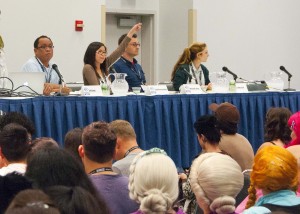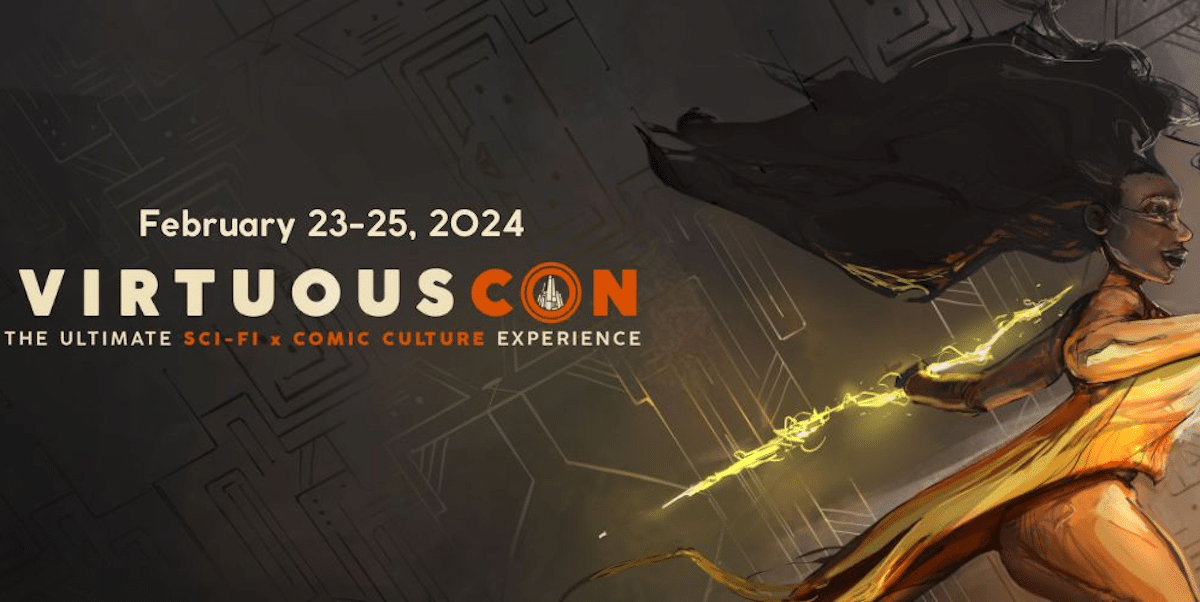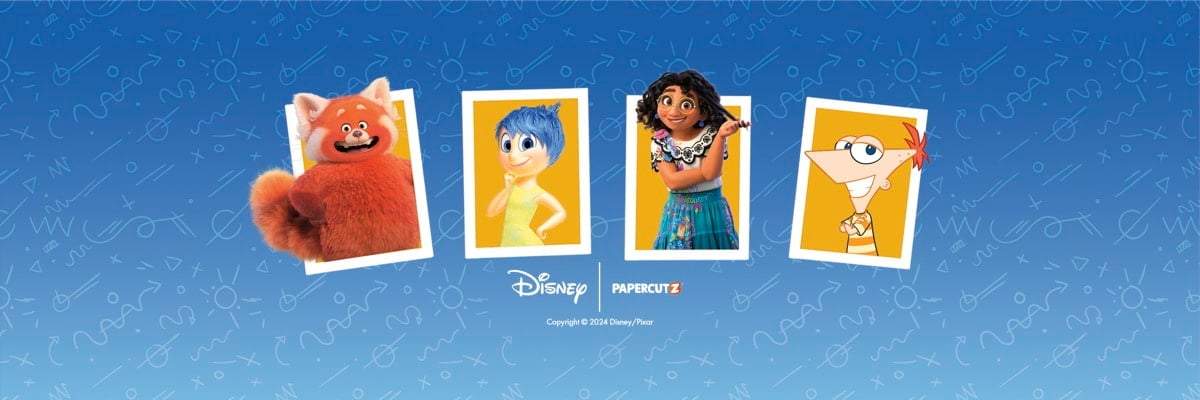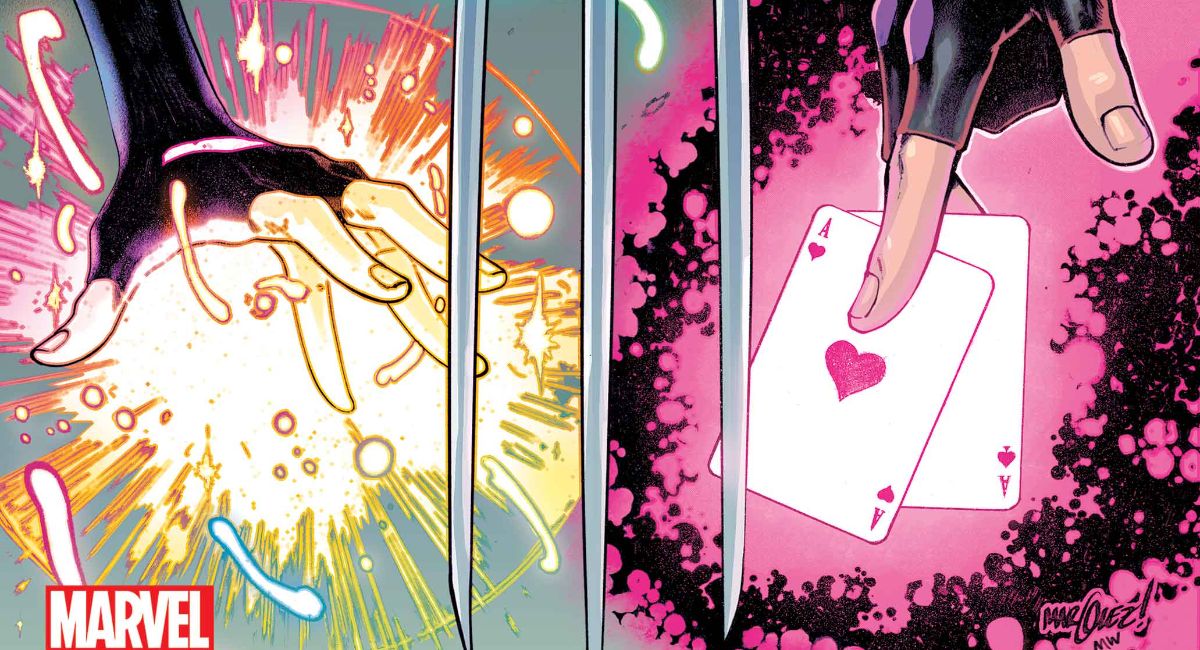
No one can deny that Frozen hasn’t been a homerun for Walt Disney Animation. It has won the first Oscar award for an animated movie for the 91 year old Disney Animation Studios, and reports are claiming that it’s the highest grossing animated picture for the company, ever! A lot of time, planning and work went into this sweep of a film. But aside from the producers, the voice actors, and the animators, there are those that worked well behind the scenes who made the movie the hit it has become: The story artists.
This year at Wondercon Anaheim we were joined by four story artists who worked on Frozen: Jeff Rango, Fawn Veerasunthorn, Nicole Mitchell, and Normand Lemay. Each of them shared what they felt what the term “story” meant for them. Jeff Rango, whose first work with Disney after his three years at Cal Arts was designing the Titans for a little animated film named Hercules, shared that for him, “Story is the architecture of a movie. And [that] the story artist is the architect.”
Jeff is also the man who worked on making the scenes match up well with the movie’s music. “The songs are pretty much done before we start [working] with the scenes. I listen to the songs and try to design the scenes around them.” Jeff worked closely with the music and lyrics composers, Kristen Anderson-Lopez and Robert Lopez, during much of the process. Since the pair lives on the East coast however, Jeff had to do it all over the web. And because he really didn’t live near the animation offices, he had to get there early to make up for the three hour time difference. But he made it work. “Since my drive was an hour and a half both ways, it let me listen to the music probably over a thousand times. It allowed me to get a feel for it.”
Fawn Veerasunthorn, Thailand born and having worked with Disney since 2011, shared that she felt the story process was broken up into two parts. The first of which is more or less pitching ideas, communicating and elaborating with others verbally, and also a little bit of “worrying” too. The ideas that make it through then are then put to a storyboard and sketched out. “With the scene that included Elsa and Anna after the coronation, we originally had it that Hans wasn’t going to be there. But as we sketched it out, we felt that Anna was just talking about her invisible boyfriend. There wasn’t enough Hans.” With the sketches, the story team was also able to focus on some repeating symbolisms. Over and over in the movie we see the gloves (protection/security) and doors (fear/hiding). They were able to decide where these symbols were most effective for each particular scene.
Before any of the scenes are animated, the general ideas have to be discussed and finalized. To get a better idea of what would work for the animation, the artists create what are called “screenings.” They’re basically the proposed scenes drawn out in pencil and animated like a slow flip book. Potential dialogue is also given to each of these hand drawn scenes. “Screenings help put into perspective what will and will not work for the story,” says Normand Lemay. Normand, the Canadian born story artist, has worked for Disney Animation for four years, with Frozen being his first credited work.
What about the snowman do you ask? Where did he come from? Well, you have Jeff Rango to really thank for that. Seen as the more comedic one of the team, he helped to design and name that silly but brainless pile of snow called “Olaf.” “I’ve lived in San Diego, and in [Ocean Beach] there use to be ‘Big Olaf’s Ice Cream.’ I pushed for that guy to be named Olaf.” Jeff also helped much with Olaf’s comedic singing scene, which personally was my favorite singing scene. Guilty pleasure you can call it. But that cute and funny snowman almost ended up on the cutting room floor if it weren’t for one scene that helped solidify his importance. “We decided that it should be Olaf who helped Anna realize that Kristoff might be her real true love and answer,” says Nicole Mitchell. She’s worked with Disney Animation for the last six years, first entering through the trainee program. “That she was loved. It helped Olaf to become a [real] piece of the movie.”
There’s a lot of work that goes into an animated feature. A lot of it is what you see in the final product on the big screen. But like any house, it should be build on a strong foundation. Next time you sit down in a theatre, or flip on your favorite animated movie, don’t forget to thank those who helped form the supporting beams that hold the entire thing up, and allowed it to become something great.
~Nicholas Eskey









Thank you for this.
It’s SO true that the REAL work behind the scenes of animated films are often created and executed by the artists before the computer animators even get to lift a stylus pen to tablet. Also, thanks for reporting on something outside of the usual comic related focus. WonderCon / San Diego is a pop culture celebration, it’s good to see reports covering more than the usual suspects at these larger shows.
The snowman and reindeer scenes in the preview were what compelled me to see this movie. I was very disappointed to realize that they were not the main characters, but I LOVED the snowman fantasy song. It was the high point of the movie for me.
This movie has been problematic for decades, due to the dark story from HCA. If you listen to the 2-disc soundtrack, you know the songs that were cut, and how the story changed.
(Here’s a radical song for Disney:
http://disney.wikia.com/wiki/We_Know_Better )
The reindeer song was actually a joke, to run during the credits, as a power ballad. Which… given Disney’s style of running the pop version of the Big Hit over the credits, would have been a nice little joke.
Disney did a great dis-direct with the movie advertising. It’s a princess movie, and they knew girls would watch it endlessly, but it had to appeal to others as well. If it had been advertised as a romance or chick flick (which it kinda is), it wouldn’t have been as successful. The sing-along version was also brilliant.
Even though it is out on DVD, the movie is still making money domestically, and might hit $400 Million ($127K to go). #6 worldwide. Five consecutive weeks at #1 in Japan.
Comments are closed.